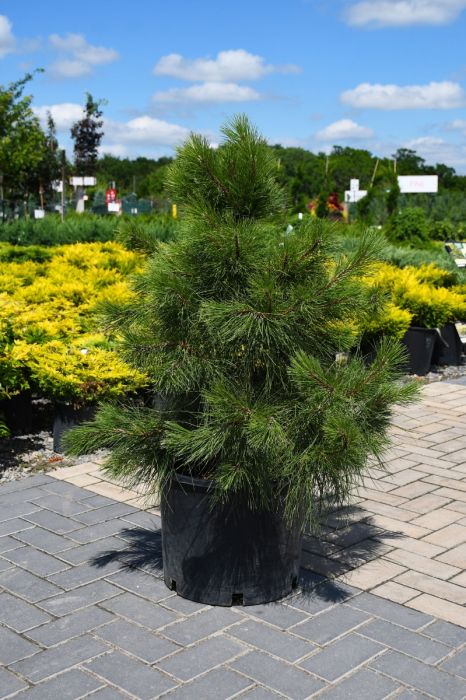Top Ten Evergreens
Brad shares his Top Ten Evergreens!




A very hardy and adaptable pine, dense and artistic when mature, does very well on poor, dry sandy soils in full sun, makes an excellent windbreak; reasonably dense habit, upright when young and holds its shape when older; really dislikes heavy, wet soils
At Minnesota's Destination Garden Center, we offer a diverse range of trees to suit any landscaping need. Whether you're looking for shade trees to cool your home or ornamental trees to add beauty and interest, you'll find the perfect tree at Gertens. Our knowledgeable staff can help you select the right tree for your space and provide tips for care and maintenance. Visit Gertens today and explore the unmatched variety of trees to enhance your outdoor environment!
Height:50 feet
Spread:40 feet
Sunlight:![]()
Hardiness Zone:2b
Other Names:Norway Pine
Ornamental Features:
Red Pine has forest green foliage. The needles remain forest green through the winter. Neither the flowers nor the fruit are ornamentally significant. The shaggy brick red bark is not particularly outstanding.
Landscape Attributes:
Red Pine is a dense evergreen tree with a strong central leader and a more or less rounded form. Its average texture blends into the landscape, but can be balanced by one or two finer or coarser trees or shrubs for an effective composition.
This is a relatively low maintenance tree. When pruning is necessary, it is recommended to only trim back the new growth of the current season, other than to remove any dieback. It has no significant negative characteristics.
Red Pine is recommended for the following landscape applications;
Plant Characteristics:
Red Pine will grow to be about 50 feet tall at maturity, with a spread of 40 feet. It has a low canopy with a typical clearance of 4 feet from the ground, and should not be planted underneath power lines. It grows at a medium rate, and under ideal conditions can be expected to live for 70 years or more.
This tree should only be grown in full sunlight. It prefers dry to average moisture levels with very well-drained soil, and will often die in standing water. It is not particular as to soil pH, but grows best in sandy soils. It is quite intolerant of urban pollution, therefore inner city or urban streetside plantings are best avoided.
This species is native to parts of North America.
| SKU | Container Size |
| E2468AP | #3 Container (3 Gallon) |
| E2469 | #7 Container (7 Gallon) |
* Not all container sizes may be available at this time. See store for details on specific container size availability.
| Gerten Grown Plants | Gerten Grown Plants |
|---|---|
| MN Native Plants | MN Native Plants |
| Tree Type | Evergreen |
| Sun Preference | Full-Sun |
| Mature Height (Range) | 25 - 50 feet |
| USDA Hardiness Zone | 2, 3, 4, 5 |
| Common Family Name | Pine |